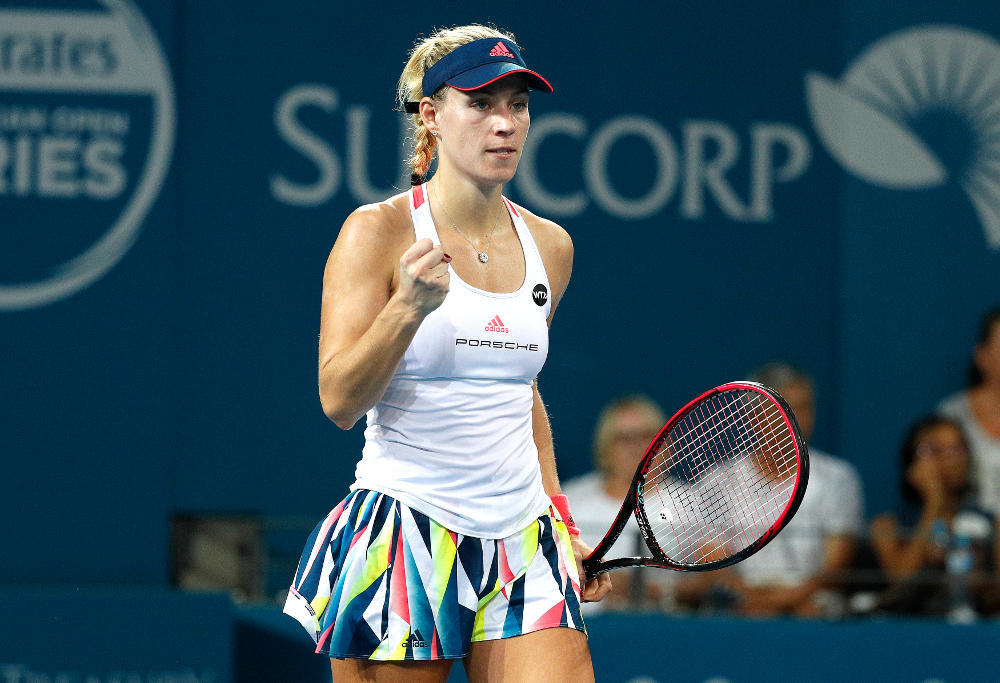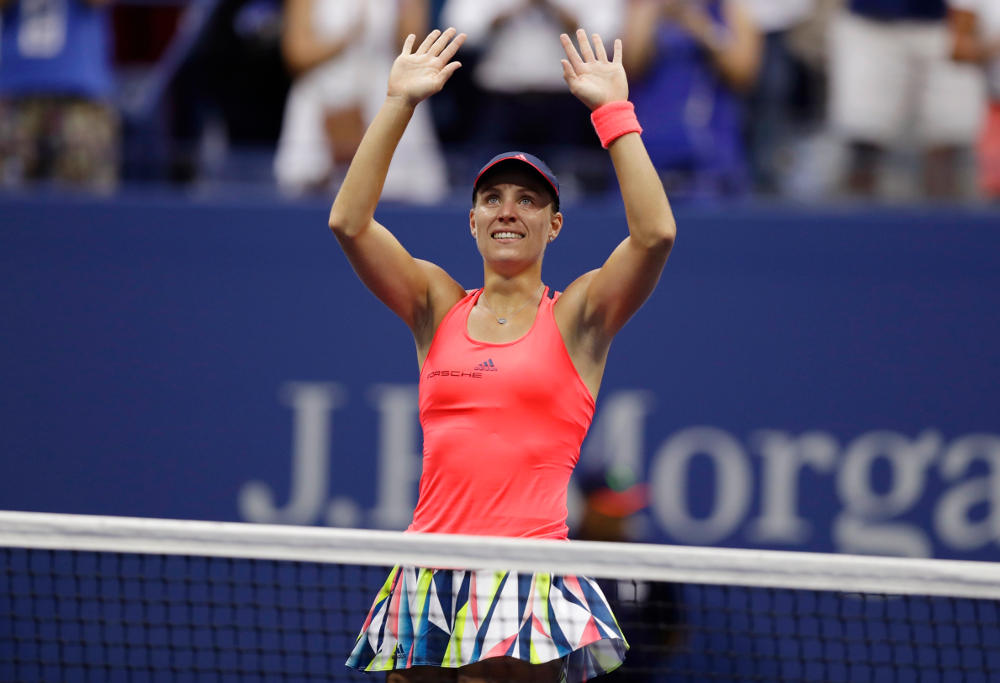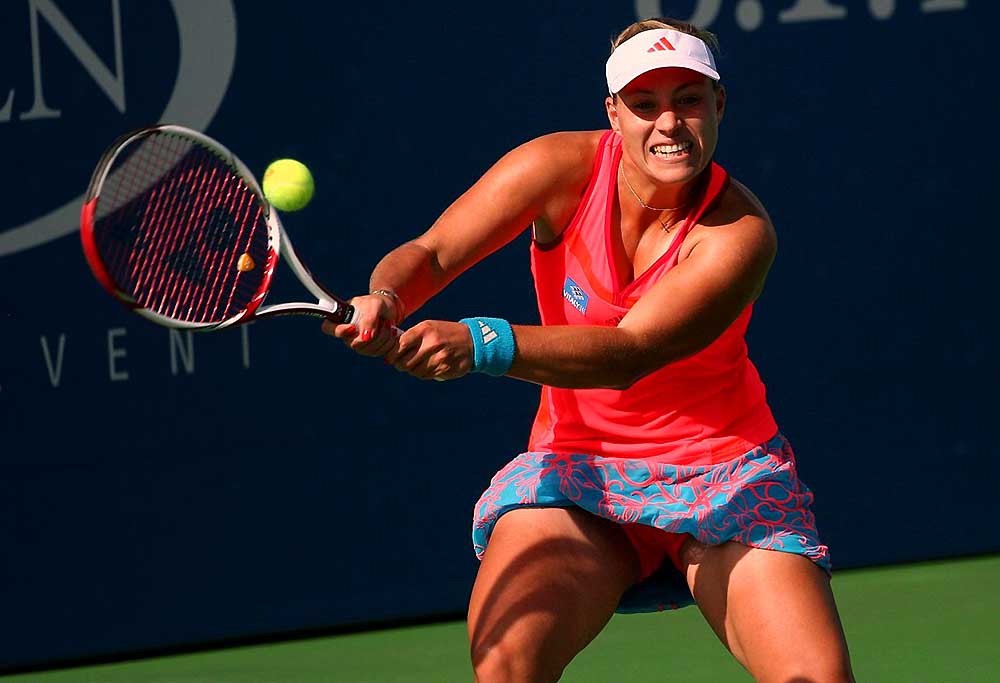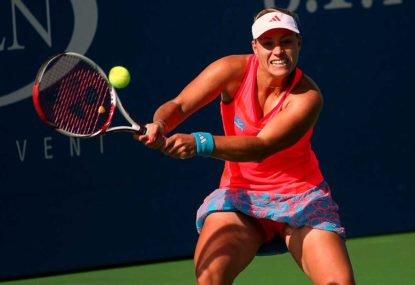This time last year, Angelique Kerber was the world number one and defending Australian Open champion.
The German had just come off her most successful season to date, in which she won two Grand Slam titles (also winning the US Open by defeating Karolina Pliskova in the final) and unseated Serena Williams, whom she defeated at Melbourne Park, at the top of the rankings in September.
She had also reached the championship match of the prestigious WTA Finals (in which only the world’s top eight women qualify), losing to Dominika Cibulkova in straight sets.
After some steady progress following her run to the semi-finals of the 2011 US Open while ranked 92nd in the world, many believed that Kerber was starting to peak at the right time in her career.
But nobody would have forecast the stunning fall from grace the 29-year-old would endure in 2017.
Her year started shakily, losing two of her first three matches of the new season; in the match that she won, she was stretched to three sets by local favourite Ashleigh Barty in the second round of the Brisbane International.
Then, at the Australian Open, she was taken to three sets in each of her first two matches, before appearing to get things back on track by defeating Kristyna Pliskova (the twin sister of Karolina) in the third round for the loss of just four games.
However, her title defence would come to an end in the fourth round, where she was defeated by Coco Vandeweghe in straight sets. Not only did the German fail to defend her title, she would also lose her number one ranking after Serena Williams went on to win the title while eight weeks pregnant.

(AAP Image/Dave Hunt)
This left Kerber with a season record of four wins and three losses at the end of the Australian swing.
She would reach her first semi-final for the year in Dubai, losing to Elina Svitolina; that defeat would prevent her from reclaiming the world number one ranking from Williams.
A fourth round loss to Elena Vesnina and quarter-final loss to Venus Williams at Indian Wells and Miami respectively followed, before she managed to reach her only final for the year in Monterrey where she lost to Anastasia Pavlyuchenkova in three sets.
But things would unravel in the European clay court swing; as the defending champion in Stuttgart, the German lost her first match to Kristina Mladenovic, was forced to retire in her third round match against Eugenie Bouchard due to a thigh injury, and then dropped her opener in Rome against Anett Kontaveit.
A horror month then culminated in an opening day, first round straight-sets loss to Ekaterina Makarova at the French Open; she thus became the first top seed to lose her first match at any Grand Slam tournament since Martina Hingis at Wimbledon in 2001.
It also marked the first time a women’s world number one lost her opening round match at Roland Garros, but despite that major hiccup, she retained top spot in the rankings after Simona Halep lost to Jelena Ostapenko in the final (when a win would’ve seen her overtake Kerber).
She fared somewhat better in the grass court swing, reaching the quarter-finals in Eastbourne where she was defeated by Johanna Konta, and then reached the fourth round at Wimbledon where she was the only player to win a set against the eventual champion, Garbine Muguruza.
Her fourth round loss at the All England Club, where she was defending points from reaching the final the previous year, saw her lose the world number one ranking once again, this time to Karolina Pliskova.
The German’s season then took a turn for the worse when she lost her opening matches in Toronto and Cincinnati to Sloane Stephens and Ekaterina Makarova respectively, before she became the first defending champion since Svetlana Kuznetsova in 2005 to lose her opening match at the US Open.

(AP Photo/Charles Krupa)
The result meant she dropped out of the top ten for the first time since 2015, but in her first tournament since her US Open flop, she would reach the semi-finals in Tokyo, losing to Anastasia Pavlyuchenkova after defeating Karolina Pliskova in the quarter-finals for her only top ten win of the year.
But that would be as good as it got for the German; her failure to qualify for the WTA Finals and a winless run at the WTA Elite Trophy in Zhuhai saw her finish the year ranked 21st, her lowest year-end finish since 2011.
Her fall from grace complete, she decided to split with Torben Beltz and subsequently hired Wim Fissette, who had previously worked with the likes of Kim Clijsters, Simona Halep and Victoria Azarenka, as her new coach.
Kerber’s 2017 season was nearly identical to that of Ana Ivanovic’s 2009 season, in which she started the year ranked fifth in the world but finished it outside the top 20 as she struggled to burden the pressure of being a Grand Slam champion, having won the 2008 French Open at age 20.
It was this same pressure that caused Eugenie Bouchard to plummet down the rankings in 2015 (in her case, she reached the Wimbledon final and peaked at number five at age 20), and will be burdened by Jelena Ostapenko, who like Ivanovic won the French Open last year aged 20, in 2018.
Kerber, however, will turn 30 this Thursday and she will probably only have about two-to-three years of good tennis left in her before she retires.
To kick off the new season, she partnered with Alexander Zverev to represent Germany at the Hopman Cup, where she was to be guaranteed three singles matches as part of her preparations for the Australian Open.
She won all three of those matches in straight sets, including defeating Daria Gavrilova and Eugenie Bouchard, before she defeated Belinda Bencic in her rubber in the championship tie against Switzerland (but it would not be enough as the Swiss claimed their first Hopman Cup title since 2001).
Then, in her first match at the Sydney International, she found herself in deep trouble when she faced two match points against Lucie Safarova in the first round.
She dug deep to win that match in three sets, then came from behind again to defeat second seed Venus Williams in the second round, displaying the tennis that saw her top the rankings over twelve months ago.
Subsequent straight-sets wins over Dominika Cibulkova and Camila Giorgi saw her reach her first final for the year, but only her second since the end of the 2016 season.
She then defeated Ashleigh Barty in straight sets to capture her eleventh career title, but first since winning the US Open in 2016. She has also re-entered the world’s top 20, coming in at number sixteen.
This has given the German all the confidence going into the Australian Open, where she is seeded 21st and will face compatriot Anna-Lena Friedsam in her opening match.
The soon-to-be-30-year-old is then projected to face Maria Sharapova in the third round in what would be a battle between the only two former champions in the field (after the withdrawals of Serena Williams and Victoria Azarenka), and reigning Wimbledon champion Garbine Muguruza in the fourth.
Sharapova’s run to the semi-finals in Shenzhen has lifted her back into the world’s top 50, thus making her a dangerous unseeded floater, while Muguruza had to withdraw from Brisbane and Sydney due to a thigh injury.
If Kerber can maintain her strong form created by winning Sydney, then there is every chance she can go deep at the Australian Open, which will help with her ranking as she attempts to break back into the top ten.

After the Indian Wells-Miami swing, she will have very little points to defend for the majority of the clay court season, while she can also earn fresh rankings points during the US Open series, having gone winless across three tournaments in the corresponding period (including the US Open) last year.
Apart from a quarter-final in Miami (one of the four Premier Mandatory events on the WTA Tour, the other three being Indian Wells, Madrid and Beijing), all up there are no other major results the German will have to defend in 2018.
And so, having started the new season strongly after vowing to put last year behind her, the potential is there for Angelique Kerber to play her best tennis again and rediscover the form that saw her win her two major titles in 2016.
But the question is, will she ever return to those lofty heights, or will her win in Sydney prove to be a false dawn?
All that is set to be found out when Kerber faces compatriot Anna-Lena Friedsam in her first match at the Australian Open on Tuesday.
































































































